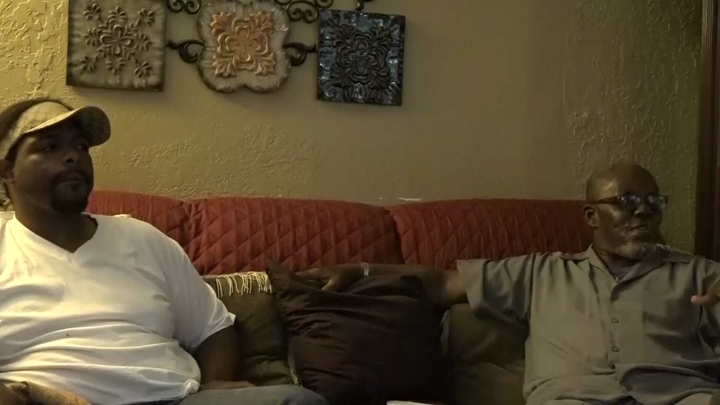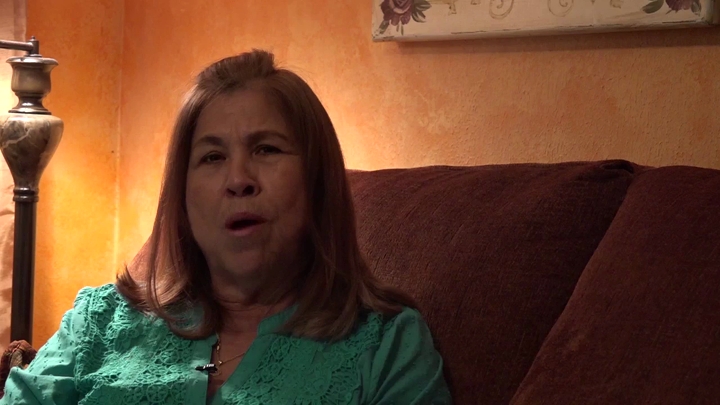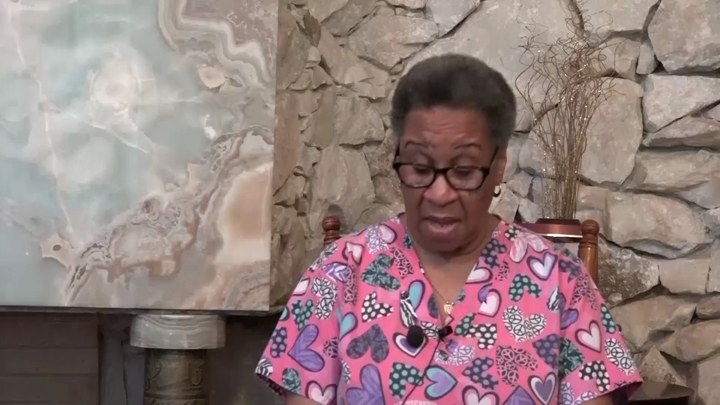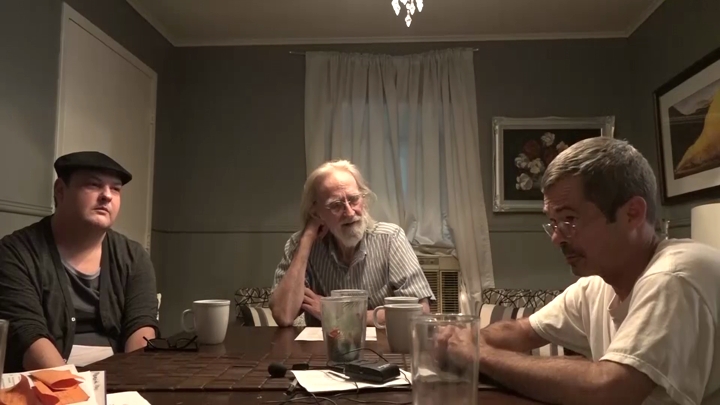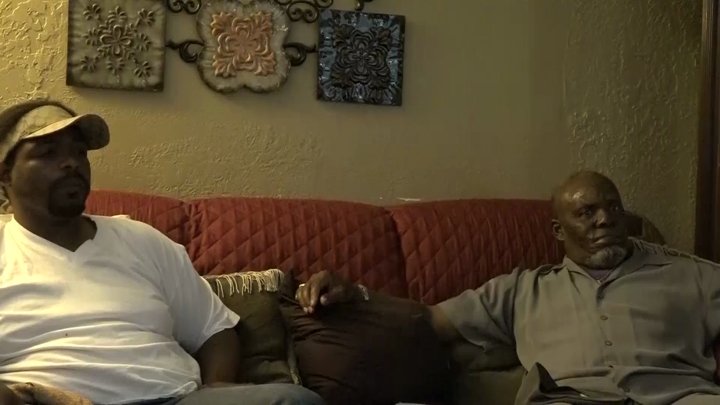Calyen / Segregation and Police Interactions
sign up or sign in to add/edit transcript
Interviewer: So, you mentioned being in a segregated neighborhood. What is your first memory or first notable memory of dealing with Jim Crow or racialized discrimination? Calyen: It was all over, but you had white fountains here and you had a black—it wasn’t black then, it was colored water fountain over here. I can remember there was a white man that drove the bus, his name was Mr. Jack. There was no segregation on the bus. You could sit on the bus anywhere you wanted to sit and ride the bus from Dugan to Pal. Mr. Jack was a nice guy and he let your ride over there—usually you have to get off and pay your way back. He let you ride back and forth. I can remember at the gas stations. You go to use the—some gas stations just had one bathroom, and some had black and white. It was a white side and a colored side. I remember at the county courthouse there was a colored water fountain and a white water fountain. You would go—everybody back in those days, all the people walked to town. We walked on the railroad tracks to downtown. Once we got to town, everybody would go to the courthouse because if you needed to use the bathroom, you’d go to the courthouse or if you needed water you’d go to the courthouse. When you got in the courthouse, there was a water fountain over here that says white and one over here that says colored. Periodically, you’d find nobody looking and we’d go and drink from the white water fountain. You know what, the black water fountain had cold water but the white water fountain wasn’t cold. Interviewer: (laughs) So, you found out it was better? Calyen: I found that out. Yeah. Somebody told me years later that there was a compressor on the black side that kept the water colder and on the white side the compressor didn’t—by the time it got over there the water wasn’t cold. So yeah, it had its benefits. Interviewer: So, you mentioned that everyone had to go to the courthouse to get water and go to the restroom. Was that the only public— Calyen: Yeah. That was the only public—you couldn’t go into none of the drug stores. At that time, downtown Conroe had all the pharmacies and drug stores had a fountain where you could get served a sandwich or whatever, but black people didn’t go there. If you needed to use the bathroom, you had to go to the courthouse or try to hold it until you could make it back home. Interviewer: So, when the white people and the black people interacted, how was that experience, I guess, generally? The interactions between—across races? Calyen: When you say interact, you would mean like— Interviewer: It’s broad. It’s a very broad terms. So, it could be interactions in terms of if there were stores that white folks and black folks could both shop at or if— Calyen: I can remember at the post office. Now, if you go in the post office—the post office was downtown off of Simonton Street, but if you go to the post office and you get in line, if it was white customers there, you’d have to wait until all those white customers got finished being waited on before those clerks would wait on you. Pretty much in the businesses too. If you would go to some of the stores—I remember at Whacker’s, they sold nuts, peanuts, and cashews and if you wanted to get the cashews or the peanuts, you’d have to wait until that clerk finished doing what they were doing with the white customers before they would wait on you. Interviewer: What happened if black folks did not adhere to these unwritten rules that maintained segregation? Calyen: They’d probably—they would call the police. They would call the police or some of them that were macho enough probably would try to handle you themselves, but they would call the police and the police would respond. Interviewer: When you said handle it themselves, how would— Calyen: They would try to beat you up. Interviewer: So, was that common? Calyen: Yeah, it was common. Yeah. Interviewer: So, how did that impact the black community? Calyen: Well, you know, it was talked about. Parents would tell their kids, almost pretty much now with Black Lives Matter, they tell your kids, “Hey, make sure when you get downtown, you don’t go in there and do anything wrong or don’t pick up anything or don’t give those people now trouble.” You had some rules that you had to adhere to before you were turned loose to go downtown by yourself. Interviewer: And that was a protection mechanism? Calyen: Yeah. Keep from getting in trouble. Interviewer: You mentioned law enforcement. What was the relationship between law enforcement and the black community at that time? Calyen: Well, the law enforcement back then, it was an all-white force, so they would come through the neighborhoods and drive through. If you had a problem, if someone did something to you that was black in the neighborhood, well they would handle it, but if a white person did something to you, it was pushed under the rug. Interviewer: Was there any instances of brutality by police during that time? Calyen: Yeah. They would come and—at that time, they didn’t have mace or anything, they had a long nightstick and they’d beat people up with their nightsticks and some people that got intoxicated, they would just tell them, “Go on up town and I’ll meet you up there.” They’d just tell them to go to jail. They’d leave walking and they’d get up there and they’d lock them up. At that time, the jail was in the county courthouse and they’d tell them to go on downtown, I’ll meet you when I get up there.
| Interview | Interview with Henry Calyen |
| Subjects | Family › Childhood Experiences |
| Housing › Neighborhoods › Residential Segregation | |
| Discrimination or Segregation | |
| Police and Law Enforcement | |
| Police and Law Enforcement › Police Brutality | |
| Discrimination or Segregation › Discrimination or Segregation of Public Accommodations › Water fountains | |
| Tags | sign up or sign in to add/edit tags |
| Interview date | 2016-07-06 |
| Interview source | CRBB Summer 2016 |
| Interviewees | Calyen, Henry |
| Duration | 00:06:54 |
| Citation | "Segregation and Police Interactions," from Henry Calyen oral history interview with , July 06, 2016, Conroe, TX, Civil Rights in Black and Brown Interview Database, https://crbb.tcu.edu/clips/3356/segregation-and-police-interactions, accessed December 21, 2025 |


